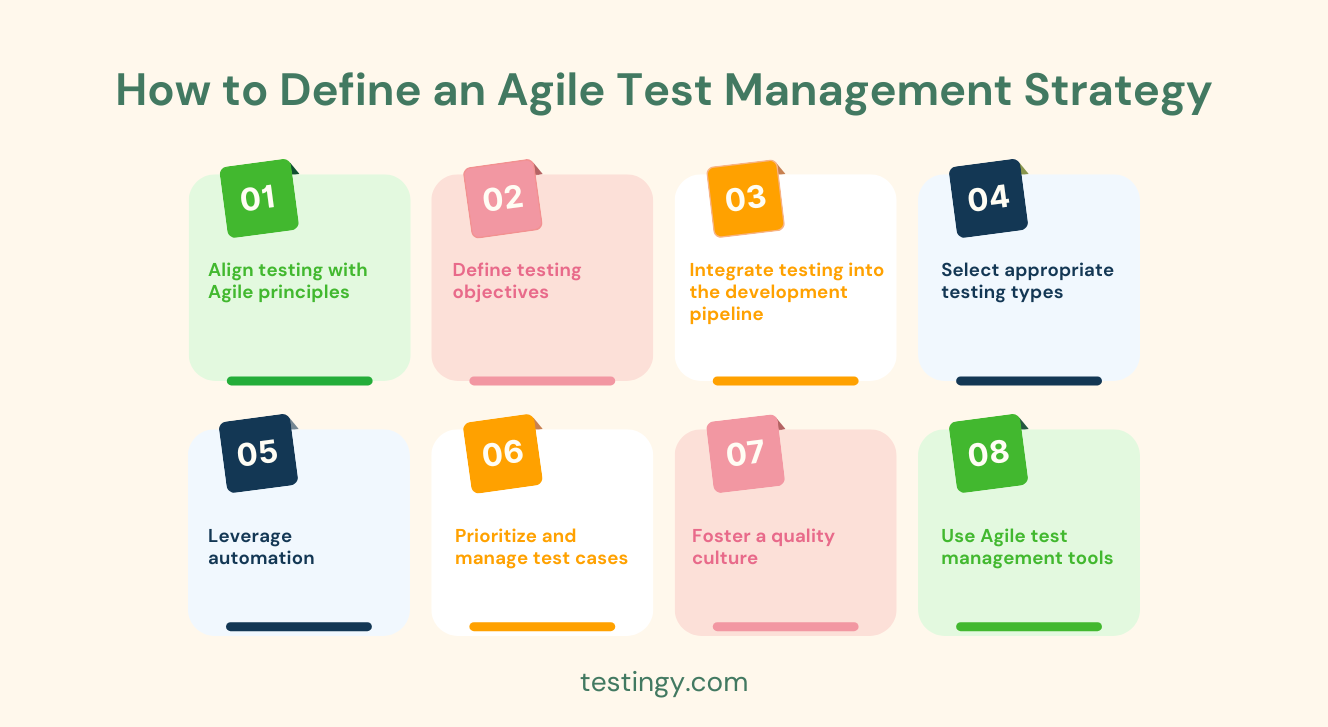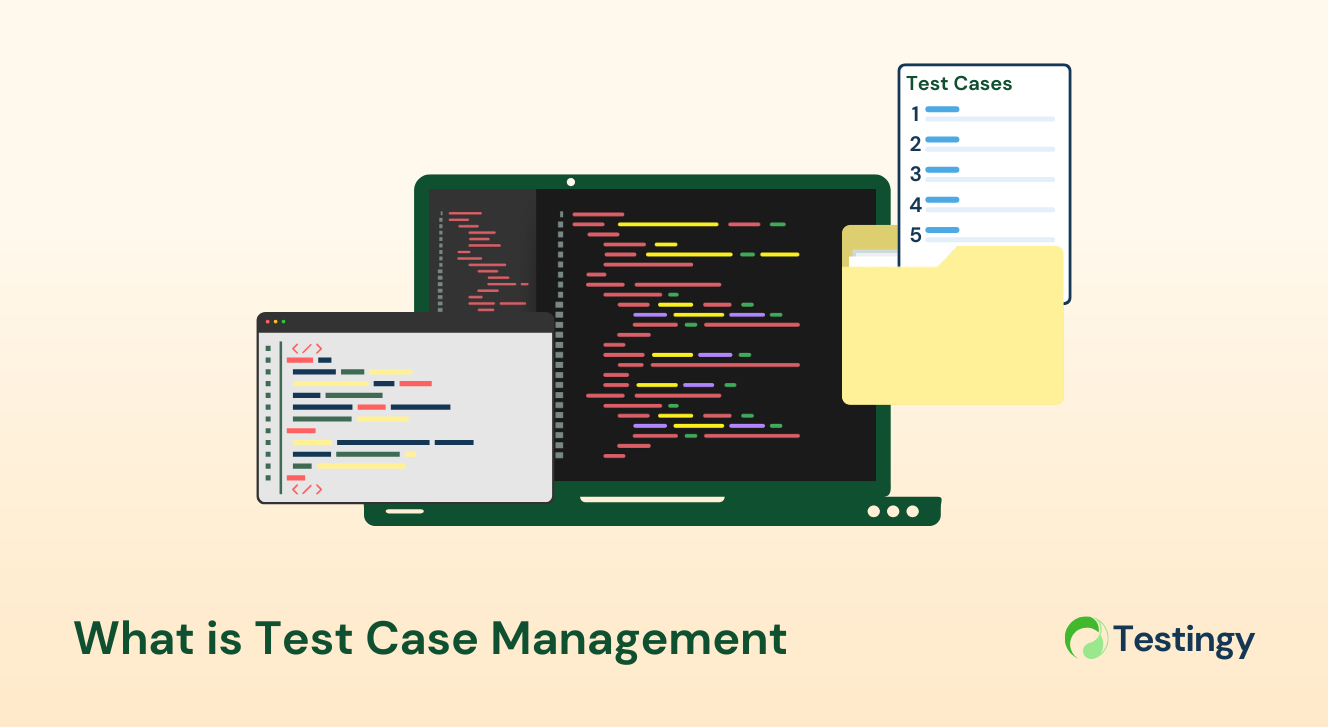Mastering Agile Test Management: A Guide to Quality Code
Let’s imagine, you’re a developer coding a killer feature when a bug suddenly sneaks in and ruins your sprints and deadlines. Everything! That’s when Agile test management comes in to save the day. It offers a structured way to catch issues early, streamline sprints, and deliver robust software in fast-paced environments.
With 94% of agile teams reporting faster delivery through effective testing practices, it’s a game-changer for coders who want quality without chaos. This guide dives into agile test management from a developer’s perspective, breaking down its principles and strategies with clear, actionable insights.
Whether you’re writing unit tests or debugging APIs, this approach will help you ship cleaner code with confidence.
Understand Agile test management
Agile test management is built on four principles that ensure testing supports iterative development.
- Continuous testing: embeds quality checks throughout the lifecycle, with testers validating user stories as they’re built.
- Collaboration: unites testers, developers, and product owners, who refine requirements together in sprint planning and pair-test to resolve issues fast.
- Adaptability: allows testing to pivot when requirements change, using risk-based approaches to prioritize critical features, like a new search filter added mid-sprint.
- Feedback-driven improvement: leverages rapid feedback loops, with sprint retrospectives refining processes, such as automating slow manual tests.
These principles enable agile test management to deliver quality software incrementally.
How does it compare to Traditional test management?
Agile test management transforms how developers approach testing, offering a dynamic alternative to traditional methods. Unlike traditional test management, which can feel like debugging a completed app with errors buried deep, Agile test management provides real-time insights to keep code quality high.
The table below highlights the key differences, showing why agile is a developer’s ally in fast-paced sprints.
| Aspect | Traditional Test Management | Agile Test Management |
|---|---|---|
| Timing | Tests after development, e.g., finding API errors months later, requiring costly fixes. | Tests during sprints, e.g., catching auth glitches daily for quick resolution. |
| Documentation | Relies on lengthy test plans that often become outdated. | Uses concise user stories, like “User updates profile,” as flexible test guides. |
| Team Dynamics | Isolates testers, slowing communication, and fixes. | Fosters dev-tester collaboration, e.g., pairing to resolve form validation issues. |
| Automation | Emphasizes manual testing, which is time-intensive. | Prioritizes automation, e.g., CI/CD pipelines run tests per commit for instant feedback. |
This contrast makes agile test management ideal for developers navigating iterative projects, ensuring quality without derailing coding flow.
How to define an Agile test management strategy
Crafting an Agile test management strategy is like herding cats while riding a unicycle—tricky, but doable with the right moves. You need a plan that’s structured yet bendy enough to keep up with Agile’s fast-paced, iterative groove.

Here’s a beefier guide to nailing it, packed with practical steps and just enough humor to keep you from crying into your code.
1. Align testing with Agile principles
Agile testing is not a solo act—it is a team jam session. Teams should run tests in short, sprint-sized bursts to match development cycles, delivering bite-sized chunks of quality.
Besides, testers must huddle with developers, product owners, and stakeholders to decode user stories and acceptance criteria. This collaboration ensures everyone stays on the same page, and teams build features customers actually want, not some idea that sounds cool but flops like a bad sitcom.
2. Define testing objectives
The testing North Star is quality that shines through every sprint. Teams should aim to validate functionality, performance, and usability so the product does not crash harder than a toddler after a sugar high.
Additionally, testers must prioritize rapid feedback to catch issues before they snowball, and teams should keep escaped defects rarer than a unicorn sighting. The endgame is a product that is technically solid and makes users happy, not one that sparks a help desk meltdown.
3. Integrate testing into the development pipeline
Teams should not leave testing alone in the development process—they must get it in early with a shift-left mindset. Testers and developers should tag-team from day one, with developers cranking out unit tests and testers doing exploratory probes.
Additionally, teams can set up continuous integration (CI) to auto-run test suites every time developers commit code, catching bugs faster than a cat chasing a laser pointer. Teams also earn bonus points for test-driven development (TDD), where developers write tests first, clarifying requirements and dodging bugs before coding starts.
4. Select appropriate testing types
An Agile test management strategy requires a balanced mix of testing types to ensure comprehensive coverage.
- Unit testing: validates individual components, ensuring they function as intended.
- Integration testing: verifies that these components work together seamlessly.
- System testing: evaluates the product as a whole, confirming that all features meet requirements.
- Regression testing: is crucial to ensure that new changes do not disrupt existing functionality.
- Exploratory testing: allows testers to uncover edge cases through creative, ad-hoc approaches.
Non-functional testing, including performance, security, and usability tests, should also be incorporated based on project needs to address all aspects of quality.
5. Leverage automation
Automation is the team’s trusty sidekick for grunt work like regression and smoke tests, saving time and sparing testers from soul-crushing repetition. Tools like Selenium, JUnit, or Cypress handle functional testing, while JMeter tackles performance.
However, teams should not let robots steal the show—manual testing remains king for exploratory work and usability, where humans beat algorithms. Therefore, teams must keep automated suites updated, or they will turn into a creaky old machine spitting out irrelevant results.
6. Prioritize and manage test cases
With tests piling up faster than laundry, teams should prioritize like pros. Risk-based testing focuses testers on high-stakes features—think “if this breaks, we’re toast.”
Besides, teams should design test cases according to user stories for traceability so testers know they have covered all bases and can prove it when the boss asks. Teams ought to regularly declutter their test suite, tossing outdated or redundant cases to keep things leaner than a startup’s coffee budget.
As a result, this approach keeps testers focused and sprints humming.
7. Foster a quality culture
Quality is not just the testers’ problem—it belongs to everyone. Developers, product owners, and even the guy who refills the coffee should care about shipping a solid product.
Therefore, teams should hold sprint retrospectives to dissect what went wrong (or right) and tweak their approach. Besides, training equips the team with Agile testing tricks and tools so they are not fumbling like newbies at a hackathon.
When everyone owns quality, teams are not just building software—they are crafting a masterpiece.
8. Use Agile test management tools
Good Agile test management tools are like caffeine for the testing process—they keep things moving. Tools like Jira or AgileTest help teams track test cases, defects, and progress effectively, so nobody drowns in spreadsheets.
Additionally, teams should pick tools that play nice with CI/CD pipelines for seamless automation and reporting. Dashboards that scream “here’s what’s up!” with clear metrics help teams spot issues and make decisions faster than someone can say “pivot.”
The future of Agile test management
1. AI and machine learning
AI is revolutionizing testing. Predictive analytics prioritizes high-risk tests, while AI-generated test cases reduce manual effort. Tools like Testim use machine learning to maintain automation scripts and adapt to UI changes.
2. DevTestOps
The lines between development, testing, and operations are blurring. DevTestOps emphasizes end-to-end automation, with testing embedded in every stage. This trend demands tighter CI/CD integration and cross-functional skills.
3. Shift-right testing
Shift-right testing monitors software in production, using real user data to refine quality. A/B testing and canary releases complement traditional tests, ensuring resilience in live environments.
4. Increased focus on security testing
As cyber threats grow, agile teams are embedding security tests in sprints. Tools like OWASP ZAP automate vulnerability scans, making security a shared responsibility.
Conclusion
Agile test management is more than a process. It’s a mindset that empowers teams to deliver quality software at speed. By embracing collaboration, automation, and adaptability, teams can confidently navigate the complexities of agile projects.
Assess your testing practices today, explore tools like Testingy, an All-in-One test management solution, and adopt best practices to elevate your agile journey. After all, agile test management isn’t just about testing—it’s about building quality into every step of your path to success.








